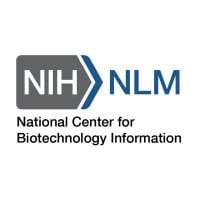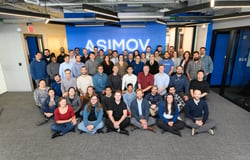Black Canyon Consulting (BCC) is searching for Computer Scientist to support our work for the Advanced Visualization Branch (AVB) at the National Institute of Nursing Research (NINR), an institute at the National Institutes of Health (NIH). This opportunity is full time and onsite/remote at the NCBI in Bethesda, MD and/or remote.
The NINR fosters, conducts, supports, and administers research and research training programs directed at promoting the growth and quality of research related to nursing, health care, and related biomedical and behavioral sciences, and expanding the pool of scientists to conduct research related to the mission of NINR. Within the DIR, the AVB has responsibility for research efforts relating to the planning and development of 3D simulations, virtual environments, and virtual and augmented reality applications designed to improve patient experience and self-care management activities. The AVB has responsibility for research efforts relating to the planning and development of 3D simulations, virtual environments, and virtual and augmented reality applications designed to improve patient experience and self-care management activities.
We attract the best people in the business with our competitive benefits package that includes medical, dental and vision coverage, 401k plan with employer contribution, paid holidays, vacation, flexible working hours, remote options, on- and off-site training courses, and tuition reimbursement. If you enjoy being a part of a high performing, professional service and technology focused organization, please apply today!
The incumbent serves as a computer scientist, with responsibility for performing and advising on research activities involving advanced visualization technologies. The work involves access to advanced technology involving biomedical, biomechanical, graphic design, 3D modeling and computer programming, as well as aspects of a highly productive clinical research program.
Major Duties & Responsibilities
- Systems Development and Management
- Designs and develops scientific software applications. Uses Unitytm or similar programs or programming languages to create 3D immersive environments for use in programmatic research. Collaborates with a research team of computer engineers, programmers, clinical nurse specialists and research staff to create user interface, environmental appearance, object characteristics, timed events, location-based events, integrated audio and visual elements, and user movement.
- Creates new virtual environments, maintains, and updates existing 3D environments, and assists staff in implementing and troubleshooting all virtual environments.
- Extracts and exports data from user actions in virtual environments to researcher defined variable list and data structure. Develops novel models for analyzing and understanding human movement and interactions in virtual space. Extract and export tracking data from VIVE HTC Pro 2 HMD. Independently designs and implements beta-testing, pre-UX testing, and data simulations software testing processes.
- Use industry standard software techniques associated with developing, testing, and monitoring software performance from design to implementation. Develops novel, independent solutions to complex software issues for which existing technologies do not exist.
- Acquires, tests, maintains technology used in VR/AR research studies including computers, VR equipment, peripherals, graphic design tools, audio-visual equipment, motion detection suits, face cameras, and physiological measurement devices. Performs testing of equipment and software prior to implementation and troubleshoots problems if they occur during implementation. Identifies and acquires required equipment and appropriate vendors and/or creates novel technologies to solve complex visualization problems. Provides input to lab PI on budget requirements for technology acquisition and support.
- Establishes functional requirements through discussion with investigators and observations of their methods and investigates software architectures and development of methods to improve software reusability and portability. Identifies areas of risk in design implementation, provides multiple alternative solutions, designs plan for evaluating potential solutions, and presents findings to the research team.
- Keeps abreast of software standards in operating systems, graphics, and file systems, and assesses their relevance to computing. Investigates and evaluates the suitability of specific software components for assignments. Manages storage and access of data acquired from studies. Develops protocol for data sharing and archiving in coordination with NINR/NIH standards. Works directly with NINR CIT staff to implementation of data storage and sharing solutions.
- Communicates effectively with team members to understand project requirements, provide options for implementation of requirements, utilize collaboration software effectively, and incorporate knowledge and skill of team members in the software development process. Contributes to assessment of user experience and translates acquired user information into interface and/or experience improvements. Communicates technological information to external and internal stakeholders.
- Provides direct supervision of technology staff, contractors, and consultants as required. Is responsible for the development of duties, responsibilities, and time frames for completion of tasks by technology staff, contractors, and consultants. Work with lab manager on establishing level of support required for technology projects. Directly manages activities of technology trainees and fellows.
- Advice, Consultation, and Collaboration
- Serves as a technical advisor to NIH scientists and researchers in the development of all forms of advanced technology applications for use in clinical research.
- Advises scientists and researchers in planning and designing research and clinical studies requiring digital-human interface design for clinical populations. Advises on potential adverse effects of digital technologies in clinical populations and advises on techniques to reduce potential AEs. Provides guidance on user experience processes and testing phases.
- Provide technical assistance to researchers in the form of recommendations for development environment, peripheral devices, required technology. Advises on data extraction and manipulation for complex 3D environments. Advises on software development, testing, and maintenance.
- Keeps abreast of related computer science research and development at other institutions; evaluates its relevance and applicability to the organization’s requirements. Participates in conferences and meetings of professional groups concerned with the application of bioinformatics and computer technologies.
- Independently with the knowledge and approval of the lab manager develops research and consulting relationships with researchers in the NIH IRP. Establishes reputation as an expert in visualization techniques and 3D environments among NIH IRP researchers.
- Computer Science Research
- Prepares written and verbal reports describing developed systems and the general application of database technology to biomedical research for publication, or for use by management.
- Disseminates computer science research through publication in relevant scientific journals, professional presentations, and/or technology sharing agreements/licensing.
- Keeps abreast of current research in computer science and reports on innovations relevant to the AVB research.
- Research techniques and models for simulating human behavior in 3D environments.
Educational Requirements
- Bachelor’s degree in Computer Science, Engineering, Digital Arts or related field.
Top Skills
What We Do
Official account of the National Center for Biotechnology Information (NCBI) at the National Library of Medicine. NCBI serves as an international resource for the scientific research community - providing access to public databases and software tools for analyzing biological data, as well as performing research in computational biology.
The NCBI was established in 1988 by an act of the United States Congress as division of the National Library of Medicine at the National Institutes of Health, with a mission to find new approaches to deal with the increasing volume and complexity of biological data in order to facilitate the understanding of genes and their role in health and disease.
The NCBI is made up of multidisciplinary research and development teams composed of molecular biologists, biochemists, structural biologists, clinicians, mathematicians, and computer scientists who:
Archive: Gather scientific and medical research data from around the globe
• Serve as the largest repository of the world’s primary biological research data
• Produce curated datasets to enhance the value and usability of the primary data
Access: Develop systems for discovering and integrating scientific and medical data
• Create search tools and data cross-referencing mechanisms
• Display and enable download of information from the world's largest collection of biological data
Advance: Promote understanding of processes that effect health and disease
• Perform cutting-edge research in computational biology
• Design and build algorithms, programs and systems for analysis of biological data
• Provide support and training through a varied and vigorous outreach program









